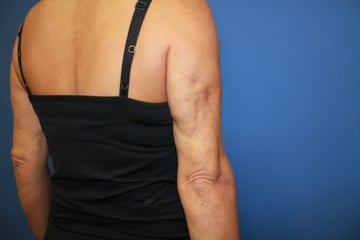Liposuction is an ever evolving, exciting field in plastic surgery. There is so much new technology it is difficult for patients and plastic surgeons alike to know what is the most effective option.
I have been toying with entering the laser liposuction arena for a couple of years. The manufacturers claim improved results with less pain and less downtime. If true, I should certainly offer the best to my patients. I am usually not an early adopter of this kind of technology, rather I typically wait until there is some real proof and science to back up claims.
In this case, it looks like I made a wise decision in waiting. At a recent national meeting a potentially groundbreaking study was presented. The study looked at laser liposuction (smartlipo™) vs. traditional liposuction head-to-head. (I’ve been waiting for a good nonbiased study). Each patient had traditional liposuction on one arm and laser liposuction (smartlipo™) on the other by the same surgeon. The early results showed no significant difference in pain or recovery. The results were reviewed over time by independent surgeons and the patient. No group could tell which arm was treated by either method with good results in both arms for most patients. Basically the $160,000 laser did nothing to improve results.
This study really validates what I have thought all along. The results of liposuction are the result of the skill and experience of the surgeon, not the technology. In other words, smartlipo™ can be as effective as traditional liposuction in the right hands. In the wrong hands, either can be dangerous.
Smartlipo™ deformity from non-plastic surgeon
With its popularity, I am seeing more and more complications from laser liposuction. Most of these are related to burns beneath the skin leading to tight scar tissue and irregularity just beneath the skin. Smartlipo™ has generally been sold to and used by non-plastic surgeons with little experience in liposuction.
These laser liposuction deformities are nearly impossible to treat completely. Improvement can usually be made with some combination of scar release and fat equalization. New liposuction technologies are advancing to try to keep up with correcting these deformities.



Pingback: Homepage